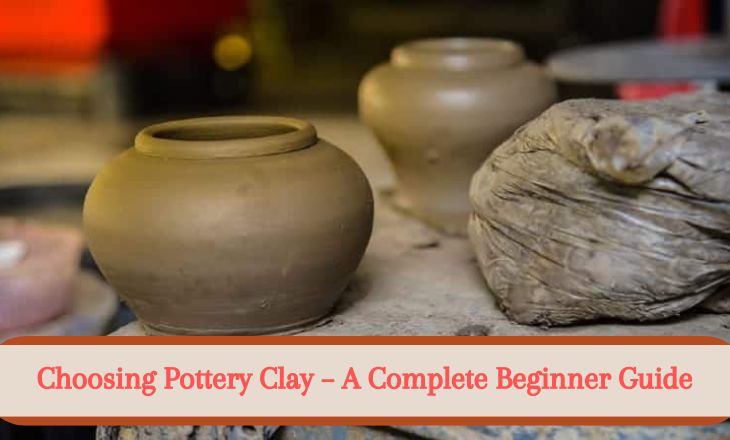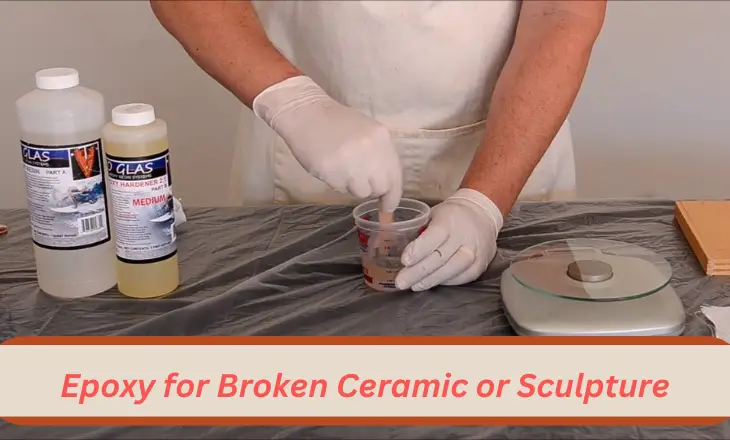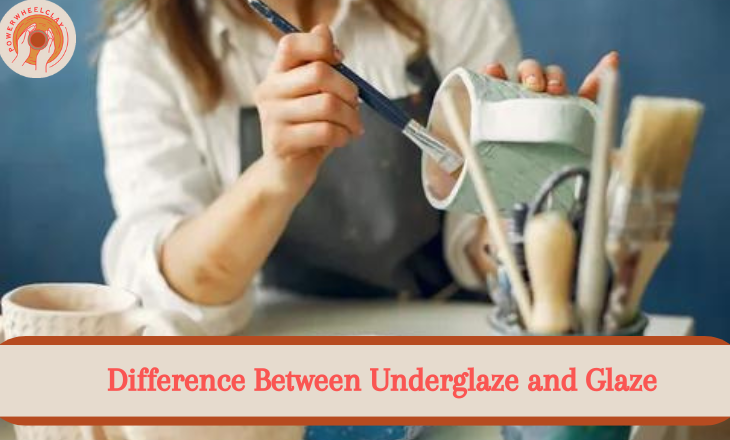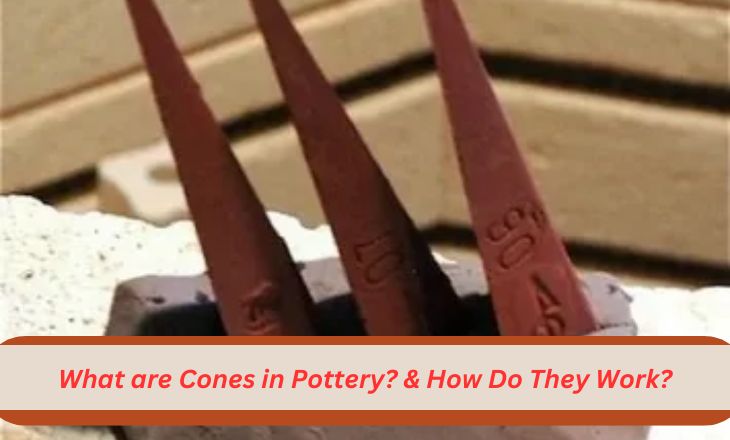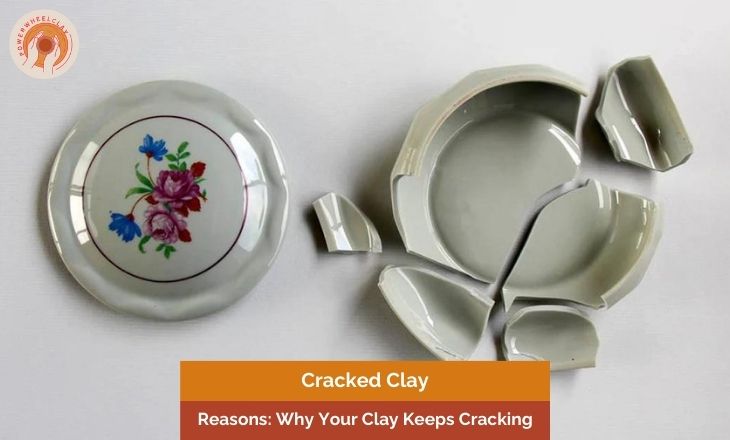Choosing Pottery Clay for Your Next Project A Comprehensive Guide
Choosing the right clay for your next project is a crucial decision that can make or break the outcome of your masterpiece. From earthenware to stoneware, each type of pottery clay offers unique qualities that can greatly impact the final look and feel of your creation.
The process of choosing pottery clay is not just about selecting a medium; it includes integrating contemporary design into thousands of years-old traditions.
Discovering the perfect clay gives you countless options to work with, ranging from rough terracotta to delicate porcelain. This allows you to be creative and experiment while making useful or beautiful objects.
What Is Clay?
Clay is a naturally occurring material composed of fine-grained minerals eroded over millennia, forming distinct types based on their mineral content and particle size. At its core, clay consists primarily of hydrous aluminum silicates, but the fascinating aspect lies in its diverse properties arising from mineralogy variations. This unique combination allows the clay to exhibit both plasticities when wet, making it moldable into various shapes, and rigidity once dry—attributes that have made it an essential medium for artisans and builders alike throughout history.
Beyond the practical uses in ceramics and construction, clay holds cultural significance around the world. In many indigenous cultures, for instance, clay serves as a canvas for storytelling through pottery adorned with traditional designs and symbols. Recent advancements in science have highlighted clay’s potential in environmental applications; researchers are exploring its capacity to absorb pollutants or even encapsulate waste materials safely.
The Types of Clay
There are several types of clay for pottery, including earthenware, stoneware, and porcelain. Each type has its unique characteristics and properties that make it suitable for different artistic endeavors.
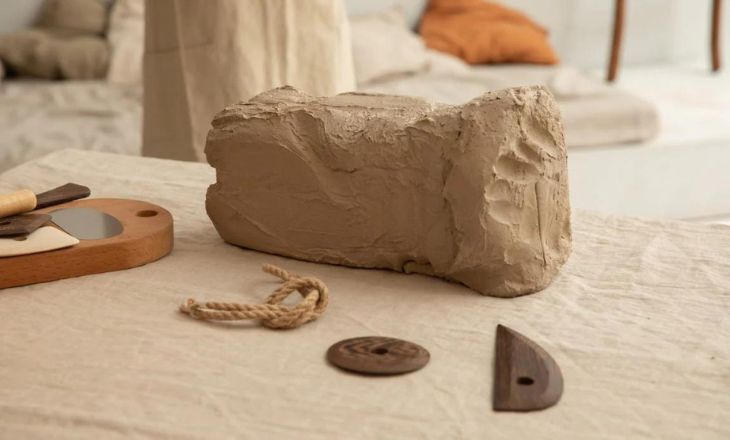
Understanding these distinct qualities opens up endless possibilities in the world of ceramics and allows artists to push creative boundaries as they explore new forms and techniques using these diverse types of clay.
Porcelain
Porcelain is a floating and beautiful type of clay that has captivated the hearts of art fans and collectors for centuries. Its wonderfully white appearance, smooth texture, and clear nature make it a desired material for complex designs, fine china, and decorative objects. It is known for its delicacy and translucency and has been revered for centuries as one of the most precious forms of clay.
Its high kaolin content gives it strength, whiteness, and the ability to withstand high firing temperatures. This unique composition makes porcelain a favorite choice for creating exquisite dinnerware, decorative items, and artistic look. The versatility of porcelain allows designers to explore new possibilities in creating seamless surfaces that bring elegance and sophistication to any space.
Earthenware
Earthenware is a classic type of clay. It has been revered for its versatility and charm for centuries. It is known for its naturally earthy tones and porous texture, it has a unique ability to absorb glazes and retain intricate detailing.
This makes it particularly popular among potters and artists seeking to create functional pieces. It carries with it a sense of tradition and cultural significance.
In the world of ceramics, earthenware stands as a timeless material that continues to inspire innovation while honoring age-old techniques. Its unique properties make it ideal for adding character to any space, embodying the natural beauty of the earth in ways that resonate deeply with those who appreciate quality and beauty.
Stoneware
Stoneware clay is a versatile and popular material in the world of pottery and ceramics. It is known for its durability, making it an excellent choice for functional pieces such as dinnerware and cookware.
One of the key characteristics of stoneware clay is its ability to withstand high temperatures, making it suitable for both oven use and dishwasher cleaning. It also exhibits a wide range of colors and textures when fired, allowing artists to achieve unique and stunning designs.
An interesting aspect is its natural composition, which includes minerals like silica, feldspar, and other non-plastic materials. This results in a dense and strong finished product that can resist chipping and scratching, perfect for everyday items like mugs, plates, and bowls.
The earthy feel and organic look of stoneware make it a favorite among those seeking to add a touch of rustic charm to their home decor.
Choosing Pottery Clay: Finding the Right Clay for Your Ceramic Creations
For beginners, I recommend the stoneware clay type. It is best for those who start pottery and are unaware of the clay types. Its plastic nature property is very Amazing. You can also use earthenware but stoneware is better than other types.
What is Clay Grog and How Will it Affect Your Decision?
Clay grog is a fascinating material that has been used in pottery and ceramics for centuries. It is a pre-fired ceramic material that has been ground into varying particle sizes. Grog increases the clay’s workability and plasticity, which facilitates shaping and reduces the possibility of cracking during the drying and burning processes. Adding too much grog can make the clay hard and difficult to work with.
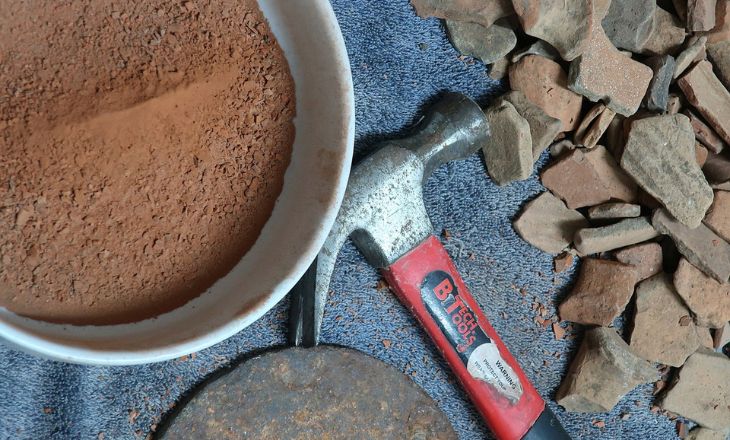
If you are a seasoned ceramic artist or a beginner learning the craft, considering the addition of grog to your clay bodies opens up opportunities for creativity and innovation in your work. By experimenting with different types and amounts of grog, you can tailor your clay to suit specific forming techniques or achieve desired textures in your finished pieces.
Color and Finish
The color and finish of pottery play a crucial role in shaping the overall aesthetic and appeal of the final piece. The choice of color and finish can also reflect the artist’s creativity and personal style, adding depth to their work.
There is an intricate relationship between the type of clay used and the resulting color and finish. Understanding this interplay allows artists to experiment with different combinations to achieve desired effects, leading to endless possibilities for innovation.
Unique shine and metallic lusters that push limits and violate standard ideas of color in ceramics are becoming more and more popular. This change opens up new channels for creative expression within this ancient art form by promoting research and inviting artists to go against standards.
Firing Your Piece
Pottery firing is a process that determines the final strength and durability of the clay. Earthenware, a low-fire clay, undergoes firing at lower temperatures to achieve its characteristic porous and rustic appearance.
This type of pottery becomes more durable when exposed to lower firing temperatures than stoneware and porcelain. The unique ability of earthenware makes it an attractive choice for artists seeking both form and function in their creations.
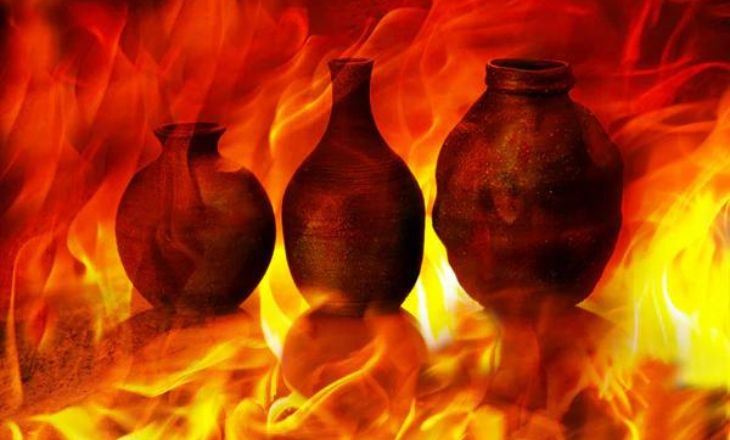
Stoneware and porcelain require higher firing temperatures for vitrification, resulting in a more solid and unbreakable finish. This quality makes them ideal for functional items like dinnerware or vases that need to hold water without seeping through the material.
Understanding the intricate relationship between firing temperature and clay type can inspire potters to think creatively about how different processes can enhance their pieces.
Conclusion
Choosing pottery clay that suits your needs is pivotal for the success of your creation in your next project. By considering factors such as clay type, color, texture, and firing temperature, you can ensure that the clay you choose will meet your specific needs and preferences.
Exploring the myriad types of pottery clay reveals diverse options, from earthenware and stoneware to porcelain, each offering distinct qualities for ceramic creations.
It’s also important to consider the intended use of your pottery and any special considerations such as food safety or durability. With careful consideration and research, you can make an informed decision that will enhance the quality and aesthetic appeal of your pottery.
FAQs
What Makes a Clay Suitable for Pottery?
A suitable pottery clay should have plasticity for shaping, low shrinkage during drying and firing, and vitrify at the desired temperature to form a durable ceramic body.
What is the Difference Between Pottery Clay and Ceramic Clay?
Pottery clay typically refers to clay suitable for hand-building or wheel-throwing pottery, while ceramic clay generally encompasses a broader range of clays used for various ceramic applications, including pottery, sculpture, and industrial ceramics. The main difference lies in their specific properties and intended uses rather than a distinct classification.
Does Pottery Clay Need a Kiln?
Yes, pottery clay needs to be fired in a kiln to harden and become durable. Kiln firing is essential for transforming raw clay into ceramic pottery through the process of vitrification.
What are fine-grained minerals?
Sand of a crystalline rock, and its texture, in which the individual minerals are relatively small; specif. said of an igneous rock whose particles have an average diameter less than 1 mm. For broadly classifying igneous rocks, fine grained means an average diameter <2 mm.
What is the difference between coarse-grained and fine-grain?
It can also refer to the quality of being composed of many individual pieces or elements. For example, a coarse-grained system has fewer, larger components than a fine-grained system, which has more, smaller components. A coarse-grained data set has less detail than a fine-grained data set, which has more detail.
